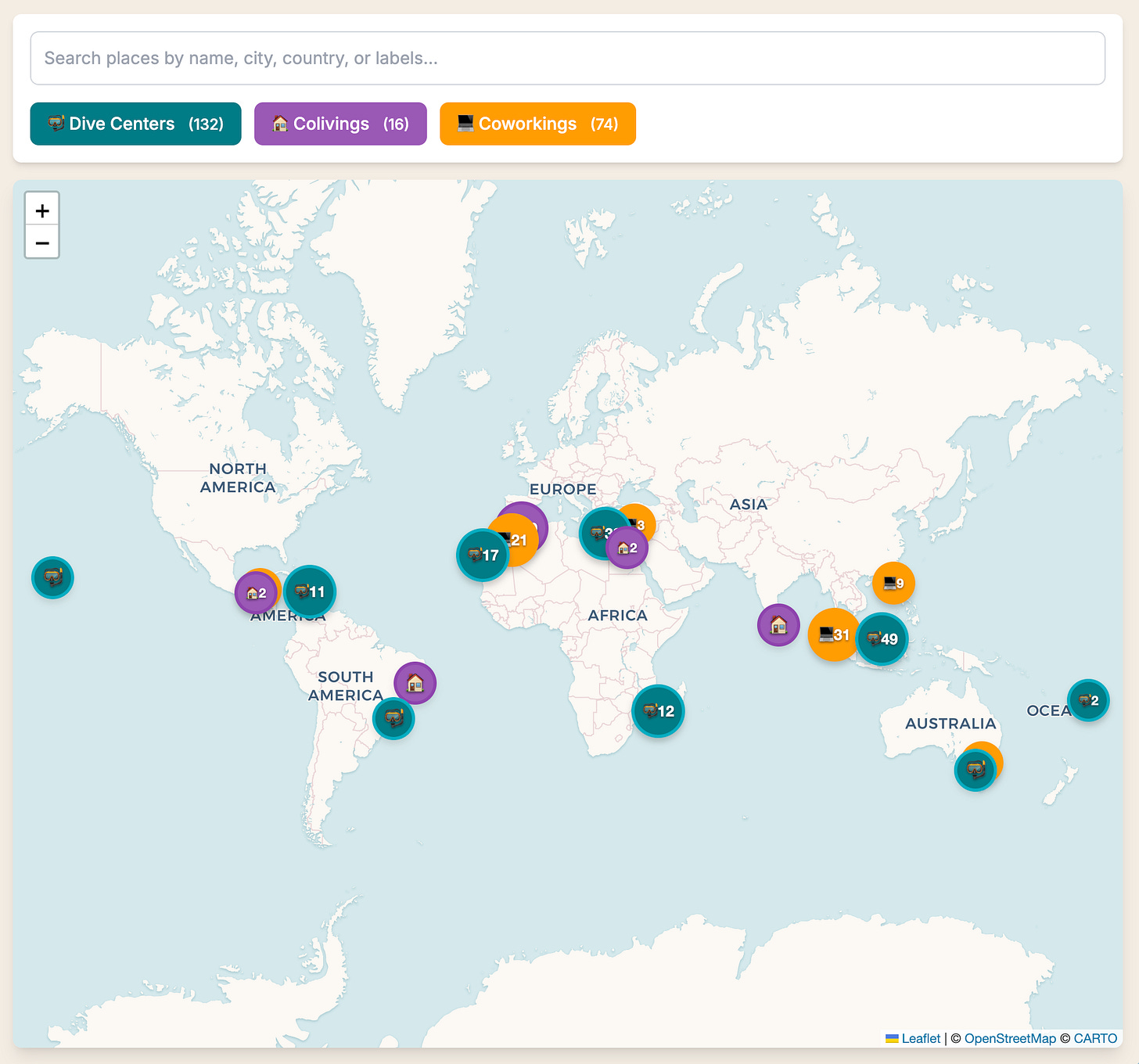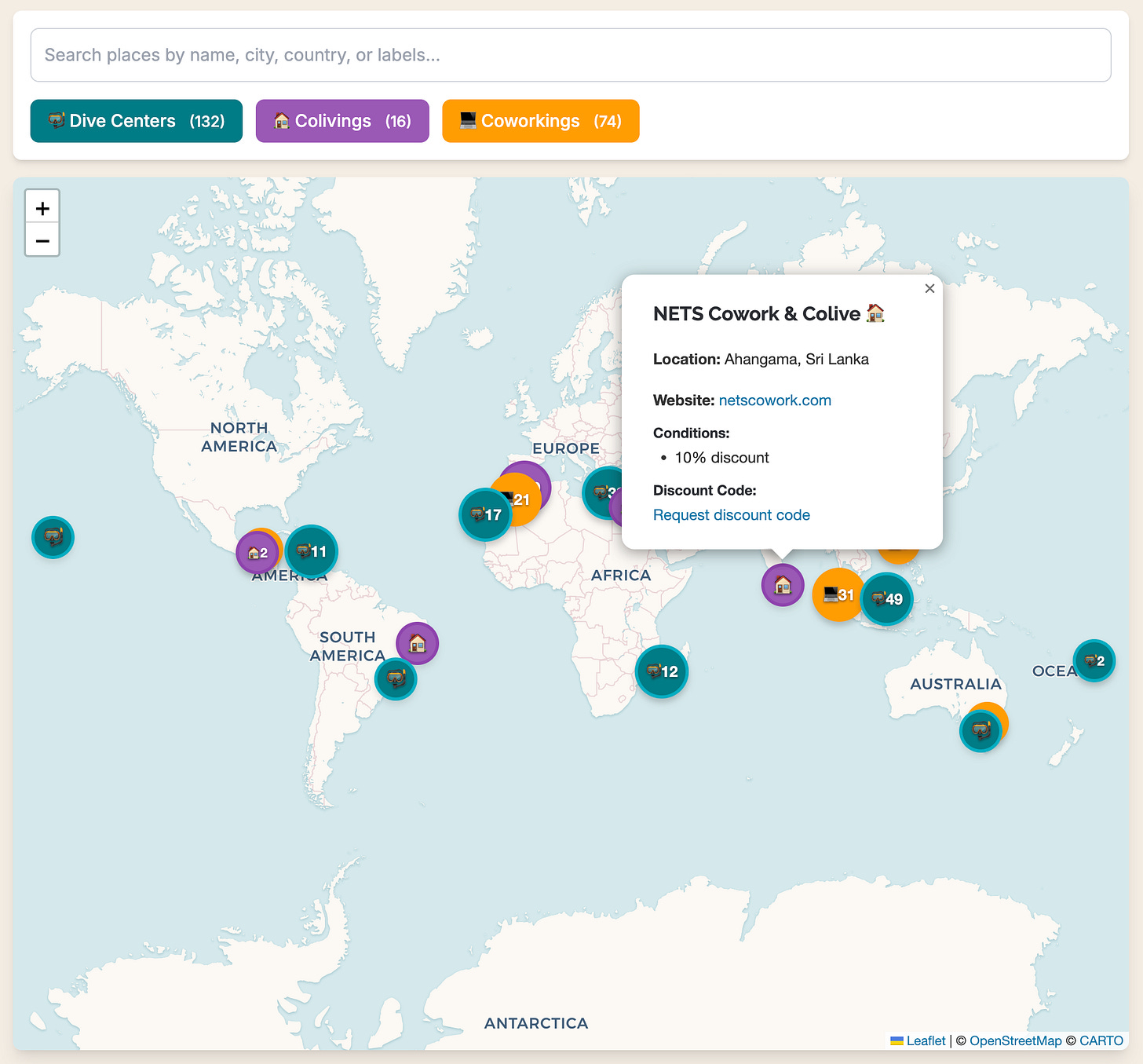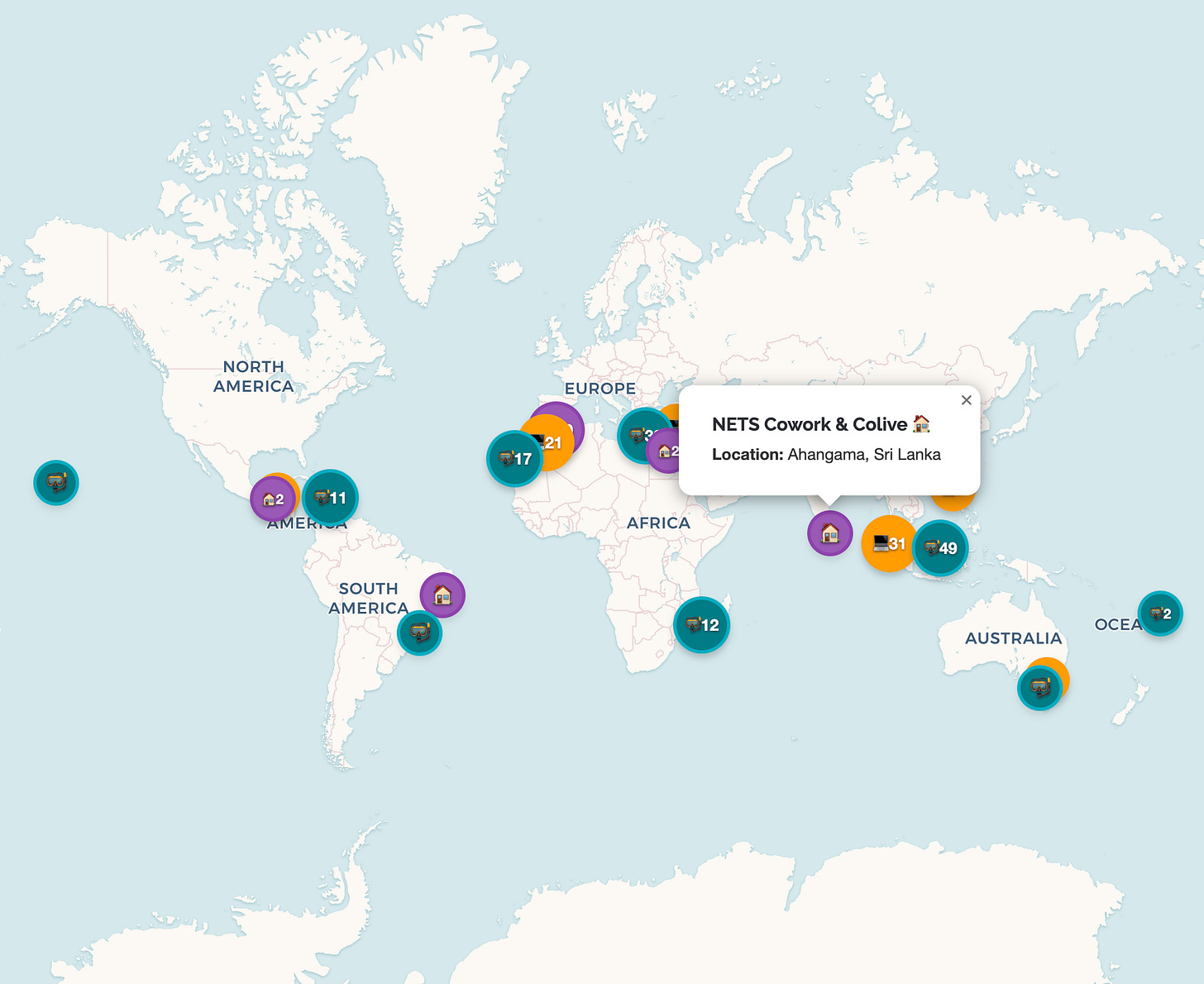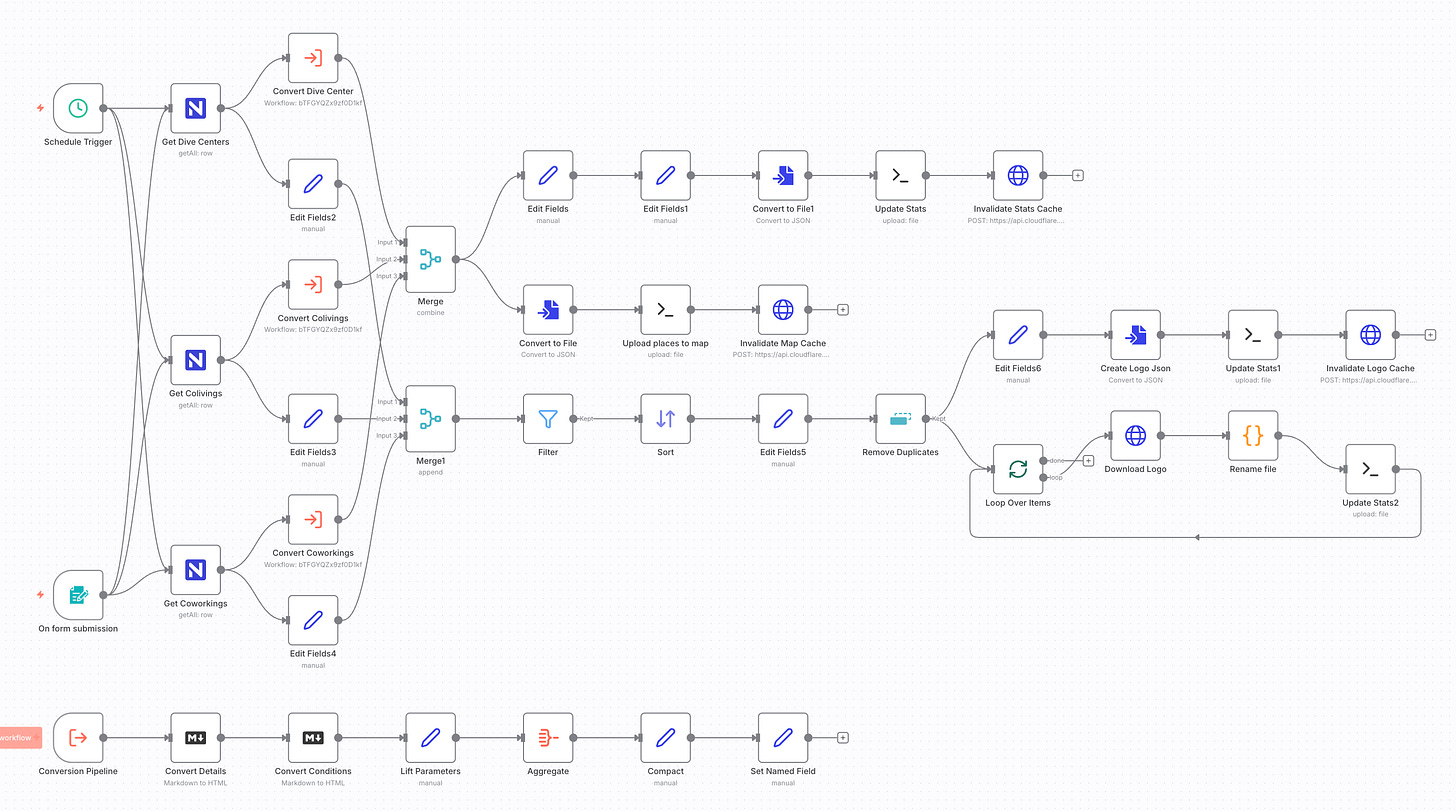How We built the Diving Nomads Partner Map
Building in Public – Part 3
This is part three of the Building Diving Nomads in Public series.
After sharing how we automated outreach for dive centers and coliving / coworking partners, this chapter is about the thing people actually use – our Partner Map.
It looks simple by design: fast to load, easy to navigate, and reliable even when other parts of the system are busy. Below is how it works and why we built it this way.
What the map does
The map shows three categories:
Dive centers
Coliving spaces
Coworking spaces
Users can filter with a free-text search – by name, label, country, or city – and toggle categories. A tap or click on a pin opens a small popover with the essentials: partner name, website, and the benefits for our members.
On the public view, we keep it minimal for speed. The membership area shows more detail where it’s useful.
We already have 200+ partners on the map, and it stays snappy even on slow connections.
Why a fully static app
I didn’t want a heavy backend or a “live” API for something that mostly displays public data. So the map is a fully client-side Nuxt.js app that reads from a few static JSON files.
Framework: Nuxt.js (because we already use it elsewhere, and it keeps the frontend simple)
Map library: Leaflet (open source, lightweight, battle-tested)
Tiles: OpenStreetMap and other providers supported by Leaflet – we’re not locked into one ecosystem and can adjust the look easily
The result: no server round-trips to fetch data, no database reads at page load – the browser pulls small JSON files and renders the map immediately.
The read model – generated, not queried
All partner entries live primarily in NocoDB. From there, n8n compiles a public read model every hour:
Pull current partners from NocoDB (dive centers, colivings, coworkings)
Normalize fields and strip anything not meant for the public
Write one JSON file for all places, one for statistics, and one for logos which we automatically show on the website
Those JSON files contain only public data and no secrets, which is why the static approach works well here. If NocoDB has downtime, the map still works – it reads the last generated files.
Hosting (files + app): Hetzner Web Hosting
Delivery: CloudFront CDN in front of it
Cache: After a rebuild, the automation invalidates the CDN paths, so new versions roll out quickly
Deployment: The app is deployed with simple GitHub actions that take less than a minute to run.
We can also trigger the rebuild manually with one click if we want an immediate update.
Freedom in tiles: I can use OpenStreetMap or other free/paid providers and switch styles without changing the app structure.
Small surface area: For what we need – markers, popovers, categories, search – Leaflet stays out of the way and keeps bundle size low.
The combination of Nuxt.js + Leaflet + static JSON is simple, predictable, and easy to maintain.
Membership area specifics
Some partners use online booking systems with discount fields. We do notexpose discount codes publicly.
In the membership area, a member can request a code:
The member clicks “Request discount code”
n8n checks membership status in NocoDB
If active, the code is sent via email (Brevo)
This keeps partners comfortable and members happy. It also avoids inventing permissions or token logic inside the map – the map stays a reader of public data, nothing more.
Performance and practical trade-offs
Currently, the JSON files are small – we’re well under any threshold where performance becomes an issue. If we pass 1,000+ partners, I’ll consider:
basic minification of the JSON
splitting the data into region-based files
simple client-side pagination / lazy loading
None of this is urgent today. The static approach already gives us 95% of the win: instant loads, minimal moving parts, and very low hosting costs.
How it stays up to date
Schedule: The read model rebuilds hourly
Manual trigger: If needed, I run it on demand
Webhook option: We could re-generate on each status change in NocoDB, but we don’t need near-real-time updates – hourly is enough for this use case
The important bit: the map isn’t coupled to the database. It’s a published snapshot. That separation makes everything calmer to operate.
Stack at a glance
Frontend: Nuxt.js
Maps: Leaflet
Source of truth: NocoDB
Automation: n8n
Email: Brevo
Static hosting: Hetzner Web Hosting
CDN: CloudFront
Deployment model: fully static – app + JSON files
Small design details that helped
Public vs. member detail: Keeping the public popover lean makes the first impression fast. Deeper details belong where context exists – the membership area.
Consistent field names: Normalizing fields in the n8n step avoids front-end conditionals. The app can stay dumb – exactly how I like UIs.
Where the map data comes from (briefly)
This map sits on top of the earlier work:
Dive centers: collected and contacted automatically; once confirmed, they’re added to partners
Coliving / coworking: discovered via Google Maps API, scored, de-noised, and enriched (email scraping), then queued for outreach
When any of these become partners, they are automatically put into a different NocoDB table for active partners, and the next read-model build puts them on the map.
Closing
This map is intentionally boring in its architecture – and that’s the point. Static files, a CDN, and a small Vue app are more than enough here.
The payoff: it’s fast, robust, and cheap to run. And if another part of the system has a bad day, the map still shows people where to dive, live, and work – which is the job.
All of this could be built in less than a day as we had all the foundations in place (n8n, NocoDB, static web-hosting, Brevo setup, …). And of course, we also have automated tests for the few bits of logic in the map.
If you’re curious about the specifics or want to adopt a similar pattern, happy to chat and support you in getting your idea off the ground. You are welcome to schedule a quick 30-min call to bounce ideas back and forth.





